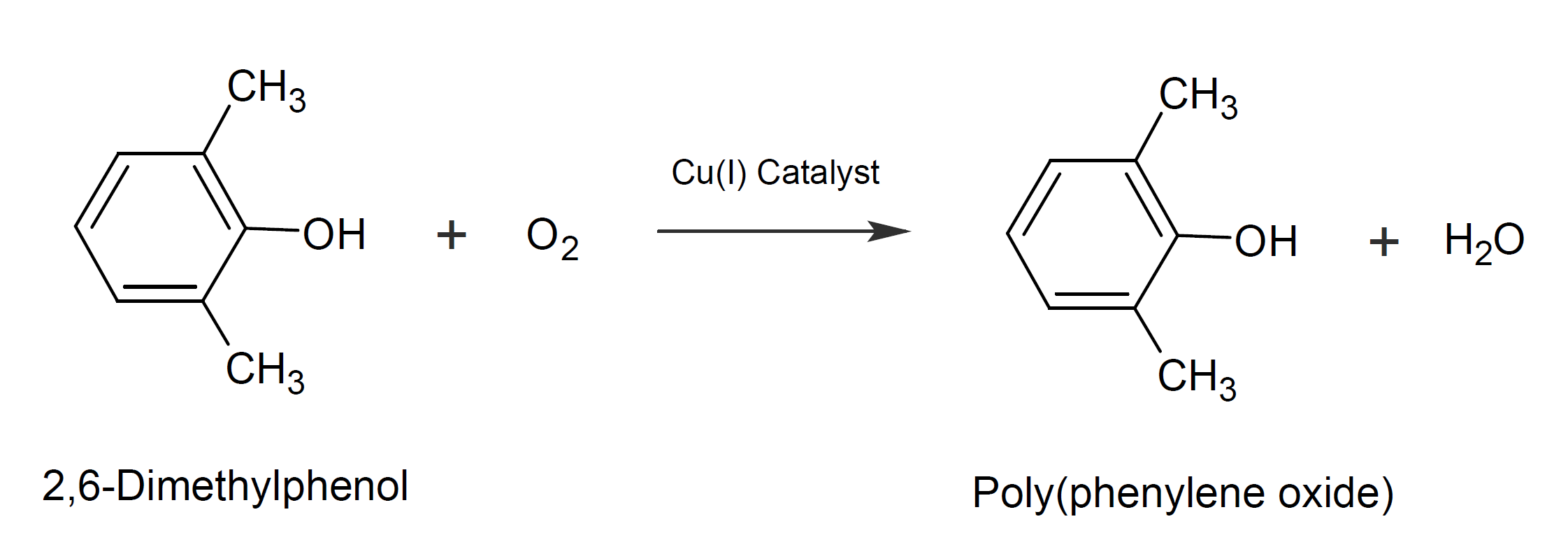Polyphenylethers (Polyphenyleneoxide)
Properties
Polyphenylethers are a class of high performance, rigid amorphous engineering thermoplastics, having high strength and impact toughness as well as moderately high heat distortion temperature. The most important commercial polyphenylether is poly(2,6-dimethyl-p-phenylene oxide) or PPO. It is synthesized by oxidative coupling reaction between 2,6-dimethylphenol (DMP) and oxygen. This reaction proceeds under mild conditions to produce only water as the by-product.1

This class of polymers has good resistant to steam and hot water, and mineral and organic acids, but is sensitive to stress cracking.
Despite its many attractive properties, PPO and its derivatives have found only limitted commercial use. The susceptibility of PPO to themal oxidation in relation to its high glass transition temperature poses a significant problem for melt processing. For this reason, commercial resins (Noryl® / Tecanyl®) are made by blending them with high-impact polystyrene (HIPS), with which it is fully compatible, or polyamide (PA). In the later case, compatibilizers such as PA-grafted styrene-maleic anydride copolymers are used to improve the blend properties.
COMMERCIAL POLYPHENYLOXIDES
Commercial grades of modified polyphenylene ethers are available from Ensinger Ltd. ( (Tecanyl), and SABIC ( Noryl™). Besides pure PPO, also blends of PPO and polystyrene and polyolefins (PP) are available that offer a wide range of flexibility, toughness, and flame retardancy. The resins are available in injection-moldable, extrudable and foamable grades.
APPLICATIONS
Poly(2,6-dimethylphenylene-oxide), called PPO, is the most widely used poly(arylene ether). It is commercially available under the tradename Tecanyl and Noryl™. This amorphous engineering thermoplastic has good strength and electrical insulation properties. Some filled grades of PPO find use in the automotive and electronic industry. Examples include pump parts, fan impellors, catalyst supports, plugs, insulators and household articles.